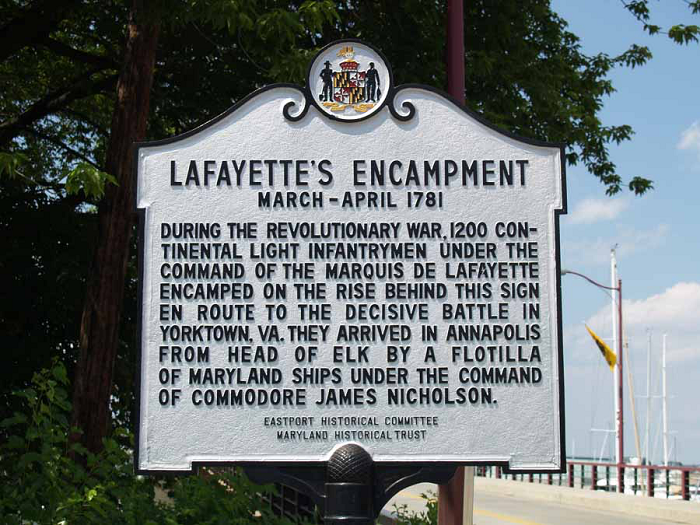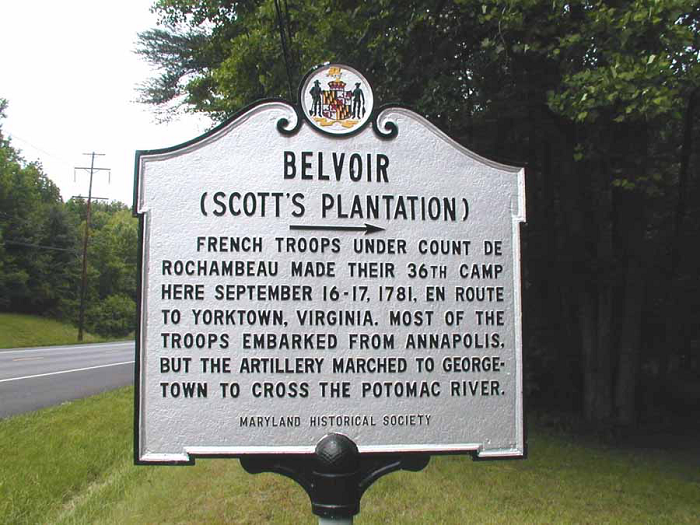Annapolis is no stranger to war - both domestic and abroad - and throughout the later part of the eighteenth century, Anne Arundel County played an integral part in the fight for freedom from the British Empire. George Washington, the Marquis de Lafayette, Rochambeau, John Adams, Thomas Jefferson, and James Monroe were just a few notorious faces that were seen here during and after the American Revolutionary War.
But did you know, our first Commander-in-Chief visited Annapolis quite often to watch the horse races, attend theatrical performances, and visit friends? His stepson, Jacky, even attended King William’s School, which later became St. John’s College.
Widow Ramsey’s Tavern
Near present-day Millersville, Maryland, a historical marker sits on the northbound side of Veterans Highway. George Washington visited here on two occasions, the first time being before the start of the American Revolution for an enjoyable trip to Annapolis in the summer of 1773, and the second in May 1775 - although I would hardly assume his second trip to be one of entertainment and merriment.
 Courtesy of Maryland State Archives
Courtesy of Maryland State Archives
After the Battles of Lexington and Concord near Boston, Massachusetts in April 1775, Congress created the Continental Army, led by General George Washington. After his appointment, Washington made his way from Mt. Vernon in Virginia up to New York City and then to Boston to assume control of the colonial forces during the ongoing seige of Boston.
From maps and records dating to about 1862/63, there is no mention of the tavern, so the structure of Widow Ramsey’s Tavern had most likely been demolished by then.
Rawling’s Tavern
Located in Harwood, Maryland at the intersection of Solomons Island Road (MD Route 2) and Harwood Road, the historical marker stands to honor Rawling’s Tavern and the special guest that visited there on September 26, 1773. En route from his home, Mt. Vernon, to Annapolis to attend the horse races, George Washington dined here.
 Courtesy of Maryland State Archives
Courtesy of Maryland State Archives
While not much is left of Rawling’s Tavern today, pictures from the Historic American Buildings Survey in 1940 give us a glimpse of what the structure looked like in its final years.
 Historic American Buildings Survey Delos H. Smith, Photographer July 1940
Historic American Buildings Survey Delos H. Smith, Photographer July 1940
 Historic American Buildings Survey Delos H. Smith, Photographer July 1940
Historic American Buildings Survey Delos H. Smith, Photographer July 1940
Later named Butler’s Tavern, it can also be seen here, after a fire in March 1968.
 By Doris Phibbons, March 1968
By Doris Phibbons, March 1968
Lafayette’s Encampment
One little-known fact about George Washington is his close friendship with the Marquis de Lafayette. Being twenty-five years younger than General Washington, the unlikely friendship between the French military officer and the Virginian General stood long after the Revolutionary War ended.
 Courtesy of Maryland State Archives
Courtesy of Maryland State Archives
Up until 1781, Annapolis had not seen very much military action, but when Lafayette came through with his small fleet of Continental ships, the war became a real part of the lives of local Annapolitians. From March to April 1781, Lafayette camped his troops here, at what is now the south entrance of Spa Creek Drawbridge, next to the Annapolis City Marina.
Count de Rochambeau’s Troops at Belvoir (Scott’s Plantation)
During the twenty-mile hike from Spurrier’s Tavern - near Jessup, MD - to Belvoir (Scott’s Plantation) located in present-day Crownsville, Rochambeau’s troops crossed this road in September 1781. Today, it is known as General’s Highway.
 Courtesy of Maryland State Archives
Courtesy of Maryland State Archives
Although they were unaccompanied by General Washington and Rochambeau at this point, they were later reunited at Belvoir, also known as Scott’s Plantation.
 Courtesy of Maryland State Archives
Courtesy of Maryland State Archives
 View towards west of Scott’s Plantation, photo courtesy of Maryland Archaeology
View towards west of Scott’s Plantation, photo courtesy of Maryland Archaeology
Scott’s Plantation, now known as Belvoir or the Belvoir Farms, is located southwest of Annapolis and strategically situated on Maynadier Creek, flowing into the Severn River. This estate has even deeper roots than just housing General Washington and Rochambeau, though. It was also the home of Ann Arnold Ross Key, the grandmother of Francis Scott Key! I’d like to think it’s entirely possible that George Washington may have met him as a toddler. What a thought!
The General’s Highway
Remember that road we just talked about? The one that Rochambeau’s troops crossed back in September 1781? Well, it’s got a historical marker, too! The General’s Highway was a well-traveled road in the eighteenth century, so it comes as no surprise that General Washington took this road from Baltimore to Annapolis in December 1783 with the plan to resign his commission as General of the Continental Army.
 Courtesy of Maryland State Archives
Courtesy of Maryland State Archives
Per eighteenth century customs, the officials and distinguished members of local society often met visitors outside the city. The Three Mile Oak got its name due to it being exactly three miles from the State House. The original tree stood about where MD Route 178 branches off to the west, which puts General Washington’s welcome parade somewhere just outside the parking lot of the old Toys R Us (R.I.P.).
Maryland State House
Possibly the most recognizable building (and prettiest, in my humble opinion) in all of Anne Arundel County is the Maryland State House. This historical marker commemorates the resignation of George Washington as General of the Continental Army, but there is so much more to love about this place!
 Courtesy of Maryland State Archives
Courtesy of Maryland State Archives
 Courtesy of the Maryland State Archives, State House circa 1789
Courtesy of the Maryland State Archives, State House circa 1789
Don’t forget to check out the interior as well! You can learn more information about tours and what’s inside the State House here.
Images courtesy of the Maryland state Archives, MAryland Archaeology, Doris Phibbons, and Delos H Smith








